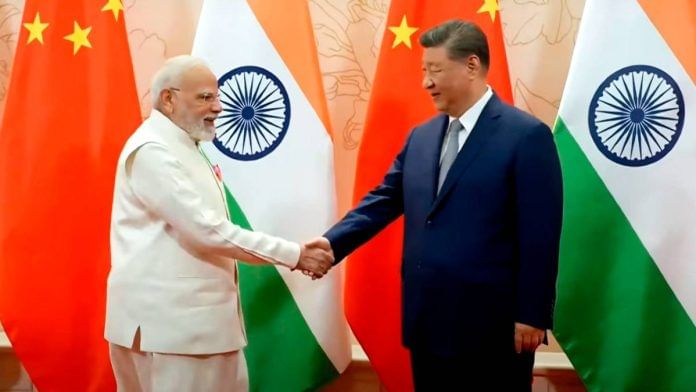New Delhi: Direct flights between India and China will resume by the end of the month, the Ministry of External Affairs (MEA) said in a statement Thursday, as New Delhi and Beijing continue confidence-building measures to stabilise bilateral ties.
“Since earlier this year, as part of the government’s approach towards gradual normalisation of relations between India and China, the civil aviation authorities of the two countries have been engaged in technical-level discussions on resuming direct air services between the two countries and on a revised Air Services Agreement,” the MEA said in its statement.
The statement added: “Following these discussions, it has now been agreed that direct air services connecting designated points in India and China can resume by late October 2025, in keeping with the winter season schedule, subject to the commercial decision of the designated carriers from the two countries and fulfilment of all operational criteria.”
On Thursday, Indian air carrier IndiGo declared plans to resume its direct flight services between Kolkata and Guangzhou on 26 October and will soon start a direct New Delhi-Guangzhou flight.
India-China relations have improved in recent months since a thaw in border tensions. Prime Minister Narendra Modi has met with Chinese President Xi Jinping twice in the last year, in the Russian city of Kazan, in October 2024. More recently, Modi met Xi in the Chinese city of Tianjin on the margins of the Shanghai Cooperation Organisation Summit in August this year.
Stabilising ties
As part of the mechanisms to stabilise ties agreed upon by both nations, India had called for the resumption of the Kailash Mansarovar Yatra, and China agreed to it. The yatra was during the late summer months of 2025.
China, meanwhile, continued to push India to resume tourist visas, which had remained suspended for Chinese nationals since the COVID-19 outbreak. New Delhi resumed the visas on 24 July this year.
Another push by Beijing has been on the resumption of direct passenger flights. New Delhi and Beijing have been negotiating the Air Services Agreement for months. Many expected the announcement soon after Modi’s visit to China’s Tianjin.
India has also been pushing China to allow the flow of specific goods, like rare earth elements, tunnel boring machines, and fertilisers. Chinese Foreign Minister Wang Yi, during his visit to India in August this year, assured External Affairs Minister S. Jaishankar of action on the exports of the three goods.
As reported by ThePrint, the last of the German-made tunnel boring machines held by Chinese customs has been dispatched to India, with it expected to arrive soon. The delay in the customs clearance of these machines impacted infrastructure projects in India.
China has also lifted the ban on fertiliser exports to India in recent weeks. In June 2024, China imposed an exports ban on urea for global markets. While it removed the restrictions on other countries earlier in 2025, it did not do the same for India until August.
The military clashes in Galwan in the summer months of 2020 had led to border tensions between the nations. The fallout from the clashes had cratered diplomatic ties.
In its statements, India has maintained that until there is peace and tranquillity on the borders, other areas of the relationship can not be normalised.
On 21 October 2024, Indian Foreign Secretary Vikram Misri announced that the two countries had reached an agreement to disengage at the friction points across the Line of Actual Control (LAC). The agreement paved the way for the first Modi-Xi meeting in the Russian city of Kazan, and a few days later, on the margins of the BRICS summit.
The first Modi-Xi meeting, a kick-off point for bilateral mechanisms, will include the Special Representative on the Boundary Question Mechanism (SR talks). Two SR-level talks have taken place in the last year, with the next one expected to be hosted by China.
The political thaw between India and China comes amid tension in the New Delhi-Washington, DC, relations. US President Donald Trump imposed tariffs of 50 percent on India. They have now come into force in August 2025.
Trump has also imposed a $1,00,000 application fee on the visa that allows high-skilled Indian workers to migrate to the US—the H1-B.
(Edited by Madhurita Goswami)
Also Read: China recognises India’s growing role in South Asia but won’t give it the ‘global power’ tag






